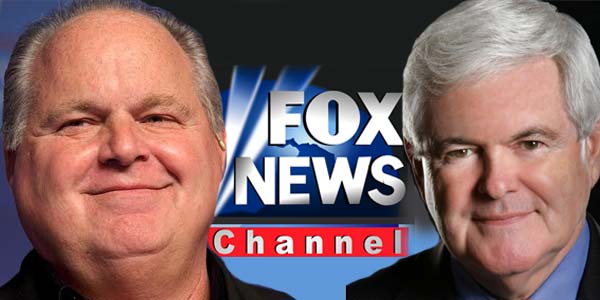In the Turkish media space, much of the post-U.S. election commentary has focused on the media’s role in demonizing Trump. Turkish pundits, actually echoing talking points from the right-wing U.S. media, are pleased that the anti-Trump media outlets got their payback on election day, and that despite their bias, the oppressed U.S. masses rose up to overturn the “liberal” media’s narrative. In order to express these ideas they use vocabulary that echoes debates within Turkish media and society.
Multiple errors contribute to the analysis described in the previous paragraph. The faulty comparisons that I enumerated in my previous article on the U.S. election are all aspects of the mistaken analysis, but I want to focus on the reality of the U.S. media in this and the next article.
The initial article that I wrote for Serbestiyet two years ago focused on the Turkish media because it was obvious to me that foreign observers did not understand the Turkish press at all, and could not identify which media outlets reflected what political stances. As an American I was someone who had long been unhappy with the quality of the U.S. media because of its shallowness and bias, and had always wanted a better alternative. The Turkish press surprised me because of the incredible diversity present; when I came to Turkey in 1999, the situation was unlike anything I had ever seen. Imagine: a station, Ulusal Kanal, which openly declared itself Marxist, was on the open airwaves! I marveled at the novelty. It wouldn’t be until years later that I understood the disturbing reason why such diversity existed, that the competing interests in the Turkish state and military were sponsoring different media organs in order to spread their propaganda in Turkish society, and that the weakness of state institutions facilitated this. Even worse, those same competing interests sometimes played out their competition on the streets, with violence. And because propaganda was the issue, much of what was published in the Turkish press was either distorted or outright fiction. Once I understood those facts, I became much less sanguine about Turkish press diversity.
I grew up in the U.S., so I have also watched American media evolve over the past forty years. When I was a child there were only three national channels, ABC (the American Broadcasting Company), CBS (the Columbia Broadcasting System), and NBC (the National Broadcasting Company), plus a government-sponsored channel, PBS (the Public Broadcasting Service), which wasn’t available everywhere. There was little difference amongst these four channels, but PBS could offer a wider diversity of educational and arts programming. The news reported on the three channels was nearly identical, but it was the still the era of the highly respected “old school” of nightly news anchors like Walter Cronkite and Dan Rather. That was also the golden age of investigative news programs, 60 Minutes and Barbara Walters’s 20/20 being the most important. Outside of television, most Americans got their news from their local daily newspaper or from the three main weekly news magazines: Newsweek, Time, and U.S. News and World Report, all in hardcopies of course. One other source of news was the radio – government-supported NPR (National Public Radio) has had a progressive reputation as long as I can remember.
In the early 1980s more viewing options began to appear. In 1981 or 1982 I became aware that some of my friends had access on their televisions to something called “cable television” that their parents were paying for. The main attraction was that the channels offered had a wider variety of programming, from sports and music to movies with content, such as obscenity, that the normal “over-the-air” channels couldn’t broadcast. That was the era when MTV (Music TV), ESPN (Entertainment and Sports Programming Network), and CNN (the Cable News Network) all got their start. FOX (the Fox Broadcasting Company) would appear not as a cable channel but as a competitor to the other major channels in 1986; until the 1990s FOX got little notice.
As one can understand from my summary, the information available to U.S. television viewers was limited even after the advent of cable television. The three main channels plus PBS were all mainstream and presented similar news. CNN was on cable and was not influential until the First Gulf War, in early 1991; that war was when CNN made its mark as a news provider. FOX did not become a competitor in the news market until 1996 when it opened the Fox News Channel.
From its inception Fox News chose to appeal to the right side of the U.S. political spectrum. While previous TV news providers had chosen the political center for their coverage, Fox News changed that precedent. In retrospect, I suppose that the U.S. political climate at that time, in the middle of Bill Clinton’s presidential years, and the intense vilification of both Bill and Hillary Clinton that the Republican Party engaged in, probably inspired Fox News Channel in its choice. Those were the years when Newt Gingrich made his name as a Republican ideological warrior and provocateur, first as the Minority Whip in the House of Representatives, and then as Speaker of the House. Fox’s right-wing slant, in turn, would eventually spur MSNBC to provide programming appealing to the left side of the U.S. political spectrum, especially during and after the U.S. invasion of Iraq in 2003.
In other words, the divisive political rhetoric that one can observe on U.S. television today is a product of the past twenty years. Until the mid-1990s overtly politicized news programming was uncommon. American print media, such as the three main weekly news magazines did have political tendencies (U.S. News – center-right; Newsweek – center; Time – center), but again they were not excessively politicized. Amongst the major national newspapers there were some known tendencies (NYT – center-left; USA Today – center-right), but nothing extremist. In the early 1990s right-wing talk-hosts on radio, the most infamous being Rush Limbaugh, also emerged as important national news commentary sources.
In the same 1990s time frame that Americans were steadily being offered fresh news options on television, the Internet appeared as an additional source of information. Today I have fun telling my nineteen-year-old Freshman students that I can remember not only when the Internet appeared, but that I even remember when the first personal computers appeared! In 1992-1993 email accounts began to be offered by most U.S. universities, and in 1994-1995 websites and topical chat forums became common. By the time I spent the 1996-1997 academic year in Cairo, Egypt, I could easily follow any news that I wanted through the websites established by major newspapers. I didn’t realize it at the time, but the world was changing with astonishing rapidity. This vastly increased the amount of information that a person had access to, for better and for worse.
The Internet also created opportunities for individuals to establish a website, or eventually, a blog (shortened from “web log”). This meant that information of essentially any sort – true, selective, distorted, false – could proliferate with extreme speed. Subsequently, political interpretations or commentaries of any kind also came to be written and propagated far more easily. This added to the polarization of U.S. political dialogue starting in the 1990s.
Here’s where the politics comes in: as I mentioned in the previous article, since WWII, the two major political parties have leaned on certain segments of the U.S. population for their electoral support. The Democrats traditionally receive votes from the middle- and lower-classes, and represent the center-left. Republicans, representing the center-right, receive votes from a strange combination of financial and corporate elites, i.e. the upper- and upper-middle-classes, and conservative rural Americans or others who support similar ideals. Generally that means Republican voters are wealthy white Americans plus conservative, often poor, white Americans.
Hence when Fox News started it had the natural viewing audience that it was aiming at — Republican voters and all those who were attracted by various ideals associated with conservative, often religious, white American culture. In the mid-1990s that meant the groups who hated the Clintons were open to Newt Gingrich’s demagoguery, and were further invigorated by Rush Limbaugh’s diatribes.













